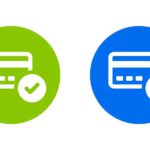The end goal of every business is to generate and realize profits from its operations. But the profit factor alone does not show whether you’re running it efficiently or not. That’s where cash flow comes into play.
Maintaining steady cash flow is critical to every business, regardless of size. Additionally, maintaining cash flow forecasting is just as important as maintaining cash flow itself. Doing so will allow you to anticipate overall financial ups and downs, which will help in better decision-making.
In this article, you’ll read about some creative alternative financing options that will help you easily improve your business cash flow and manage finance! Let’s get started!
Alternative Financing Options for Small Businesses
The concept of creative financing is something other than trying to identify and generate funds for your business from sources other than the traditional ways. Many people start their enterprise with money combined with a credit card or bank loan, often known as an overdraft.
You can seek the help of a finance professional. However, as a small business, it is not advisable to resort to Wall Street people as they’re expensive. Instead, it is better to go for https://cashflowfrog.com/, as you can receive guidance on forecasting and maintaining your funds.
To start with, here are some alternative financing options you can consider.
Crowdfunding and Peer-to-Peer Lending
Crowdfunding is a process where you can raise considerable funds from many people. These transactions are generally done online, so transferring is more accessible than hard cash. Many businesses use this method when planning to release a new product or a service or develop the company.
The next option is peer to peer lending, aka P2P transactions. Unlike crowdfunding, this is where you can borrow money from individual online investors. People find this option more attractive because the interest rates are set competitively yet relatively lower than conventional bank rates. This transaction is also done online, as it’s a far faster and more convenient option for people or firms who need money asap.
Factoring and Invoice Financing
It is natural for businesses to have accounts, payables, and receivables. However, your liquidity will be affected if you’re asked to pay your debts immediately or if you don’t receive the money you’re owed from your debtors.
In such cases, you’ll sell your accounts receivables to the factor. And the element will give you the money based on the value of the invoices after reducing a certain percentage of fees. The advantage you get is that the factor assumes the responsibility to collect money from the customer on your behalf.
Invoice finance entails borrowing money against unpaid bills. The lender loans a percentage of the value of the due receivables and collects the balance from the client. When the client pays back the money, the lender deducts its fees and interest and pays the leftover funds to you.
Pros and Cons of Different Financing Options for Cash Flow Improvement
It is a fact that creative financing does give leverage to you. However, remember that leverage is a double edge sword. Let’s glance at the pros and cons of said options.
Crowdfunding and Peer-to-Peer Lending
Pros
- Compared to traditional banking, you have more flexibility in repaying the loan amount. You can opt for ‘interest only’ or ‘variable period repayment’ options.
- Here, you don’t need to provide any security like a tangible asset or a guaranteed payment note for your borrowing amount.
Cons
- Although you have access to a large pool of donors or investors, there may be a limit on the amount you can borrow in a certain period. You won’t favor this one if you need urgent funds.
- This area can be highly competitive since many people like you need funds. So you may not be lucky to gather the donor’s attention.
Factoring and Invoice Financing
Pros
- You get the money you need in the blink of an eye.
- Less stringent verification of your creditworthiness, so you have a higher chance of getting the money.
Cons
- Relatively more expensive, and the interest rate may add up quickly. So you may not get the amount you expected.
- High probability of hurting customer relations. Why? Because you’re essentially hiring a third party, who may not be as friendly as you are to your clients.
In conclusion
To sum up, peer to peer lending, factoring, etc., is a great way to arrange funds in an emergency. Even though such provisions are lucrative, certain risks may be attached to them. You’ll be able to improve the business cash flow by using these methods in moderation.
Do you think these options would be beneficial? What method do you use to fund your business? Feel free to share your insights with us!
















